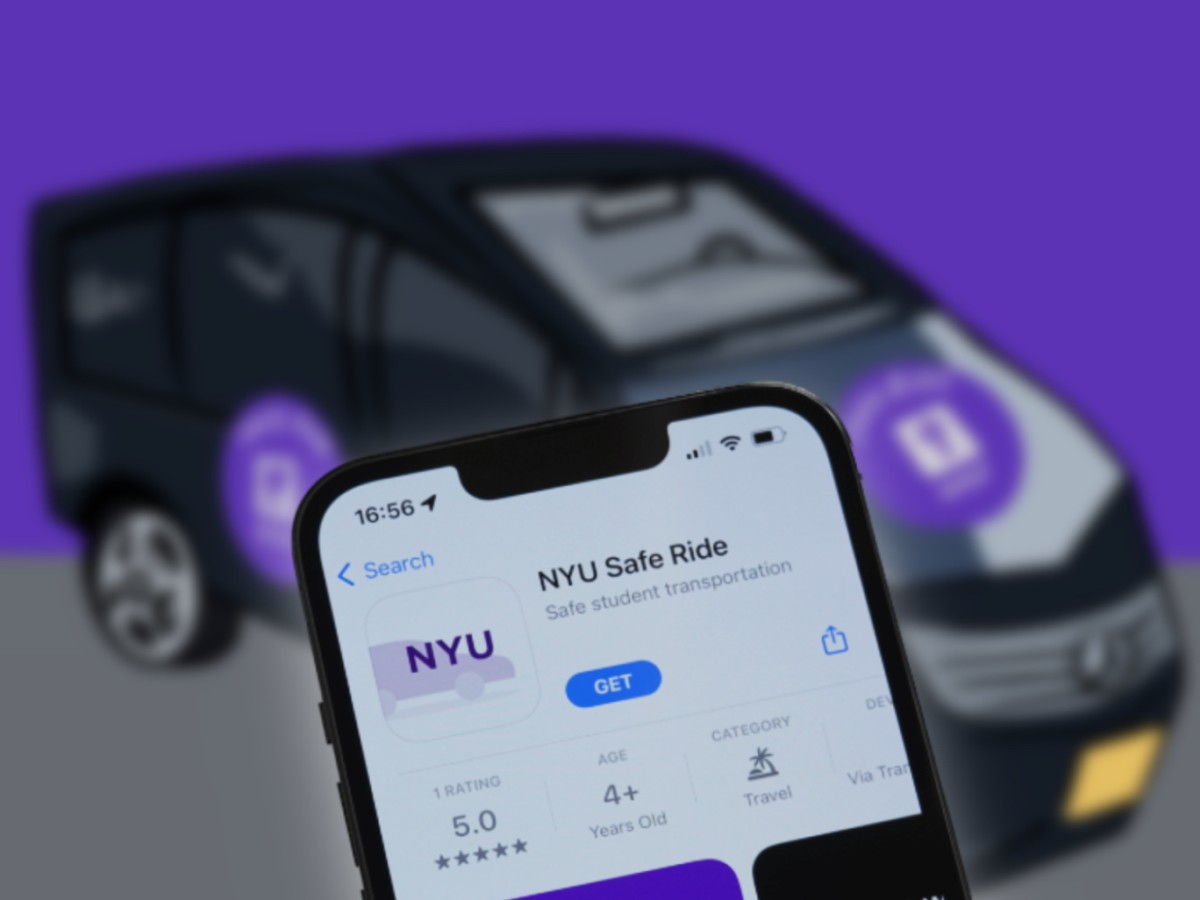Over the past weekend, one of my friends, who commutes to class every day from Long Island, spent the entire day with me. We were waiting in front of Alumni Hall for our other friends before getting a midnight slice of Joe’s Pizza, when she received a call urging her to come home immediately. Since she’s an NYU student, she decided to use Safe Ride, a free rideshare service which allows students to travel between university buildings.
She needed to go to New York Penn Station, but the closest Safe Ride location for her to be dropped off at was Langone Medical Center — too far east for an easy commute. She was left with two unsafe options: take the subway or walk a mile alone at night.
NYU Safe Ride is a partnership between NYU and Via Transportation, a transit technology company, that operates predominantly in Manhattan and Brooklyn. Students can request a ride between 11 p.m. and 7 a.m. to and from any nearby campus building. While the service is great for students that stay predominantly on campus, it doesn’t help NYU’s many commuter students who might not live near a university building. However, with a few small changes, the program could be a lot more accessible for the entire student body.
It’s not reasonable to expect the NYU Safe Ride service to travel to every individual commuter student’s home, especially as the program is already struggling to provide timely service on-campus. However, the service could be expanded to include transportation hubs like the PATH stations on Christopher Street or 33rd Street, Port Authority Bus Terminal and Grand Central Terminal, as they are essential checkpoints for those living in the tri-state area. These few key locations provide access to New Jersey, Brooklyn and Long Island, areas that contain some of the most popular zip codes for NYU students to live, according to a 2019 NYU transportation survey.
Expanding NYU Safe Ride to cover these locations would provide a way for the university to address the needs of thousands of students with only a few additional locations. According to the transportation survey, the percentage of the NYU community living in Manhattan decreased almost 10% from 2009 to 2019. With increasing rent prices near the city and higher residence hall rates, it makes sense for more students to move further away. As the number of commuter students increases, the university needs to make sure its transportation services include them.
Safe transport isn’t just a matter of accessibility, but a safety issue as well. Harassment on the New York City subway system could be a major concern for commuter students, especially late at night. While the subway remains a lifeline for many NYU students — being the primary mode of transportation for 41% of respondents — the darker, more secluded and less crowded conditions at later hours can leave students in dangerous situations.
The difficulty of getting home at night for commuter students is worsened by the lower frequency of trains and buses at later hours. During the day, students may be able to catch public transportation every few minutes, but at later times, these go down to every thirty minutes or even hourly. However, not everyone can afford an Uber, Lyft or Taxi, and being able to catch a Safe Ride would be the perfect solution.
Safe Ride can now drop students off at the West Fourth Street and 14th Street and Union Square MTA stations, meaning the infrastructure for additional expansions is already in place. Now, it just needs to access broader-reaching transportation hubs. While expanding Safe Ride may result in higher operational expenditures, these charges should be viewed as investments in the safety and well-being of NYU’s commuter students.
“We [will] continue to evaluate and make adjustments in order to enhance the overall safety of our community where possible,” Campus Safety head Fountain Walker wrote in a statement to WSN. “Expanding service would require us to ensure that the current quality and efficiency of the offering would be maintained or improved.”
Expanding NYU Safe Ride is a vital step toward enhancing the safety of the NYU community. The service should be safe for all, whether they live on, near or far from campus.
WSN’s Opinion section strives to publish ideas worth discussing. The views presented in the Opinion section are solely the views of the writer.
Contact Molly Koch at [email protected].


























































































































































